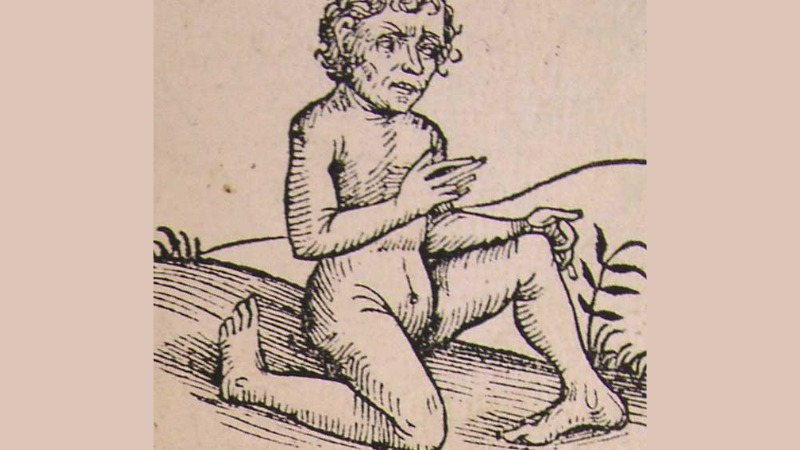The legend of the Abarimon dates back to ancient times and was first mentioned by Pliny the Elder, a Roman author, naturalist, and philosopher. According to Pliny, the Abarimon were a tribe of backward-footed people who lived in a hidden valley in the Himalayas. They were said to be incredibly swift runners, able to navigate their mountainous terrain with ease, despite their unusual anatomy. Pliny also suggested that the Abarimon lived harmoniously with wild animals and possessed unique abilities that set them apart from ordinary humans.
Evidence in Favor of Abarimon’s Existence
Historical Accounts: The mention of Abarimon by a reputable historical figure like Pliny the Elder lends some credibility to their existence. Pliny’s accounts, although sometimes embellished, were based on reports from explorers and travelers of his time.
Anomalous Foot Conditions: There are documented cases of congenital conditions that result in unusual foot structures. Conditions like talipes equinovarus (clubfoot) can cause the feet to turn inward, which could be misinterpreted as backward feet in ancient descriptions.
Isolated Tribes: The world has seen the discovery of numerous isolated tribes that exhibit unique physical and cultural traits. The Sentinelese of North Sentinel Island, for example, remained undiscovered for centuries. It’s possible that a tribe with unusual physical characteristics could have existed in isolation.
Folklore and Oral Traditions: Many cultures have stories of mythical beings that were later found to have some basis in reality. The existence of Abarimon could be rooted in the folklore and oral traditions of ancient Himalayan tribes.
Evidence Against Abarimon’s Existence
Lack of Physical Evidence: No archaeological or physical evidence has been found to support the existence of the Abarimon. Despite extensive exploration and scientific research in the Himalayas, no remains, artifacts, or records have been discovered that corroborate the legend.
Scientific Improbability: From a biological standpoint, it is highly improbable for a human population to evolve with backward feet and still maintain functionality, especially in a rugged, mountainous environment. Such a mutation would likely be disadvantageous for survival and mobility.
Exaggerated Accounts: Pliny the Elder’s writings, while valuable, are known to include exaggerations and myths. His descriptions of the Abarimon may have been based on second-hand reports or misinterpretations of actual conditions.
Modern Discoveries: Modern science and anthropology have not encountered any evidence of a backward-footed human race. Discoveries of isolated tribes and unique genetic conditions have always been within the realm of known human biology.
Mythical Nature: The story of the Abarimon shares similarities with other mythical beings from various cultures, such as the Greek satyrs or the Indian Rakshasas. These stories often symbolize moral or philosophical ideas rather than represent actual historical beings.
The legend of the Abarimon is a captivating part of ancient lore, blending the boundaries between myth and reality. While historical mentions and the possibility of unique genetic conditions provide some tantalizing hints, the lack of physical evidence and scientific improbability strongly argue against their existence. Whether the Abarimon were real or merely a product of imaginative storytelling, their story continues to intrigue and inspire curiosity about the mysteries of our world.
Share Your Thoughts!
As with many legends, the truth may lie somewhere in between, a mixture of fact, exaggeration, and the human propensity for wonder. What do you think? Could there be some truth to the legend of the Abarimon, or is it just another mythical tale? Share your thoughts in the comments below!
